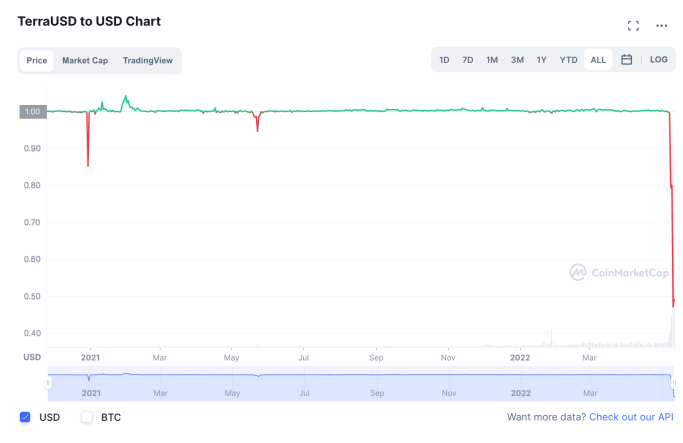Algorithmic Stablecoins
A stablecoin is a cryptocurrency that has low volatility and is pegged to a stable asset. The most popular example of this is Tether, which is pegged to the US dollar.
The main purpose of stablecoins is to provide an alternative to the volatility of cryptocurrencies. They are also used as a way for traders and investors to move money in and out of crypto markets without incurring large losses due to price fluctuations.
In the last few years, we’ve seen the emergence of algorithmic stablecoins. These are stablecoins which are not backed by assets, but are stabilised through the use of algorithmic incentives. This makes for a more decentralised narrative compared to stablecoins backed by assets, such as USDC and USDT.
The TerraUSD crash
One of the most famous examples is TerraUSD. TerraUSD was one of the biggest cryptocurrency projects, until it lost its peg on the 11th of May 2022. The TerraUSD had experienced a crash in the past, which it had defended successfully, as I had explained in a previous post. I had even used TerraUSD as an example of the stability of algorithmic stablecoins. However, it looks like TerraUSD has crashed, and at the time of writing this, it might never recover.

The discussion below was recorded on 11/5/2022. At the time of recording TerraUSD is crashing at is at $0.5. This is a discussion with Lance Parker from BankX commenting on the current developments, and the future of algorithmic stablecoins. For those of you who are interested in BankX, also make sure to check its tokenomic audit.
That’s not to say that algorithmic stablecoins are done, as Frax, which is another great example of an algorithmic stablecoin, seems to have kept its peg. In any case, feel free to let me know your thoughts! We will keep monitoring the situation and providing updates. Also, if you are interested in tokenomics, make sure to check out the tokenomics questionnaire by the Tesseract Academy.

